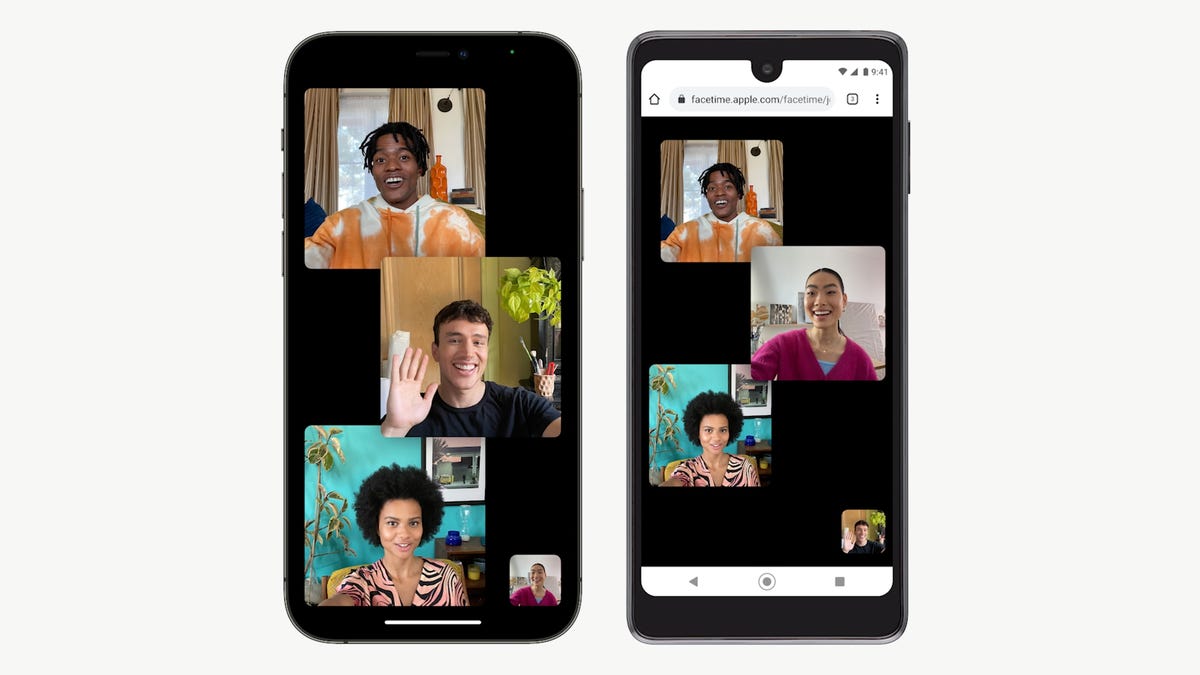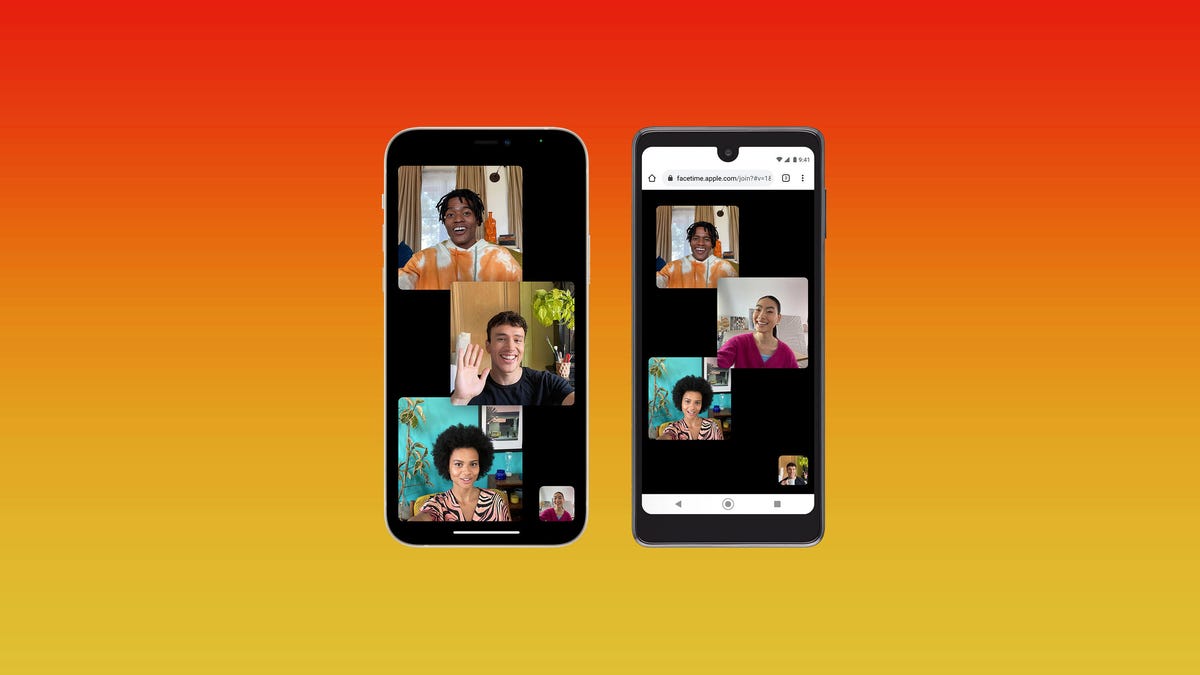Bridge the Gap: How to Join Apple FaceTime Calls from Any Device Imagine you’re planning a birthday celebration with your iPhone-using best friend, and they invite you to join a FaceTime call with the rest of the gang. However, you’re an Android loyalist or a PC enthusiast, and you’re worried you’ll be left out of the fun. Well, worry no more! With the help of a few clever workarounds, you can now join Apple FaceTime calls from your Android phone or PC, bridging the gap between the two ecosystems. In this article, we’ll walk you through the easy steps to get you connected and a part of the conversation. So, let’s dive in and explore the possibilities.
Breaking Down the Barriers: Apple FaceTime for Android and PC
The Evolution of FaceTime: From Exclusive to Accessible

For years, Apple’s FaceTime has been a hallmark of the Apple ecosystem, enabling high-quality video and audio calls exclusively between Apple devices. However, in a notable shift, Apple began allowing Android and PC users to join FaceTime calls in 2021. This move reflects a broader trend in Apple’s strategy, driven by a desire to enhance interoperability and user experience across platforms.
This evolution in FaceTime accessibility is particularly noteworthy in the context of Apple’s messaging strategy. While iMessage remains an iOS-exclusive service, Apple’s recent adoption of Rich Communication Services (RCS) with iOS 18 signals a commitment to improving messaging experiences between iOS and Android users. RCS, widely used on Android devices for texting, promises to bridge the gap between the blue and green bubbles, enhancing the communication experience for both platforms.
Despite these advancements, it’s important to note that Apple’s expansion of FaceTime access remains limited. Android and PC users can only join calls initiated by an iPhone, iPad, or Mac user. This approach suggests that Apple is cautiously testing the waters, exploring ways to integrate its services with other platforms while preserving the core strengths of its ecosystem.

Initiating FaceTime Calls: A Step-by-Step Guide
Creating a FaceTime Link: A Guide for iOS Users
The process of initiating a FaceTime call for Android and PC users begins with an iOS device. Here’s a step-by-step guide for creating a FaceTime link:
- Open the FaceTime app on your iPhone or iPad.
- Tap “Create Link.”
- A screen will appear prompting you to add a name for your chat.
- You’ll also see options to share the FaceTime link via various methods: Messages, Mail, Calendar, or other compatible apps.
- Alternatively, you can copy and paste the link directly.
Sharing the FaceTime Link: Options and Considerations
Sharing the FaceTime link effectively is crucial for ensuring a seamless joining experience for Android and PC users. Here are some key considerations:
- Direct Messaging: Sharing the link via direct messaging apps like Messages or WhatsApp ensures the link reaches the intended recipient privately and securely.
- Email: For formal invitations or group calls, email remains a reliable method for sharing the FaceTime link.
- Calendar Integration: Embedding the FaceTime link within a calendar event provides a convenient reminder for participants to join the call at the scheduled time.
- Social Media: While sharing the link on social media platforms might be tempting for group calls, it’s important to consider privacy concerns and ensure the link is accessible only to intended participants.
- Click the FaceTime call link sent by the iOS user.
- The link will open in your web browser (Chrome or Edge are recommended).
- Enter your name and tap “Continue.”
- Wait for the iOS host to admit you to the call.
- Enhanced Collaboration: Businesses and individuals can now leverage FaceTime for video conferencing across different platforms, fostering smoother collaboration and communication.
- Increased Accessibility: The move makes FaceTime more accessible to a wider range of users, breaking down platform barriers and promoting inclusivity.
- Strengthened Apple Ecosystem: While limited, this expansion can attract new users to the Apple ecosystem and encourage adoption of other Apple services.
- Google Meet: Integrated with the Google Workspace suite, Google Meet is a popular choice for businesses and individuals, offering seamless integration with Gmail and Calendar. Its cross-platform compatibility and user-friendly interface make it a compelling option.
- Zoom: Known for its reliability and feature-rich platform, Zoom has become a staple for virtual meetings, webinars, and online classes. Its extensive features, including screen sharing, breakout rooms, and recording capabilities, cater to diverse user needs.
- Microsoft Teams: As part of the Microsoft 365 ecosystem, Teams is a comprehensive collaboration platform that combines video conferencing with instant messaging, file sharing, and project management tools. Its integration with other Microsoft products makes it a powerful choice for businesses.
- “This move demonstrates Apple’s strategic shift towards a more inclusive ecosystem, catering to a wider range of users,” says Mark Jenkins, a technology analyst at Insight Partners.
- “While limited in scope, this expansion could potentially attract Android and PC users to explore other Apple services, ultimately strengthening Apple’s market position,” adds Jennifer Lee, a market research analyst at Gartner.
Receiving a FaceTime Call: A Guide for Android and PC Users
Android and PC users can join FaceTime calls by following these simple steps:

Practical Implications and Analysis
Apple’s decision to allow Android and PC users to join FaceTime calls has several practical implications:
However, it’s important to note that FaceTime’s limited functionality for non-Apple users might not fully satisfy all needs. Alternative video conferencing solutions like Google Meet, Zoom, and Microsoft Teams offer more comprehensive features, including the ability to initiate calls directly from Android and PC devices. These alternatives remain strong contenders for users seeking a wider range of video conferencing options.
Alternative Video Conferencing Options
While FaceTime offers a valuable addition to the video conferencing landscape, several other platforms provide robust alternatives for Android and PC users:
The Future of Apple’s Ecosystem: What’s Next?
Apple’s expansion of FaceTime access to Android and PC users suggests a potential shift in its ecosystem strategy. While the move remains limited, it signals a willingness to embrace interoperability and widen the reach of its services. Future iterations of FaceTime could see further integration with non-Apple platforms, blurring the lines between ecosystems and creating a more cohesive user experience across devices.
Expert Insights and Perspectives
Sareena’s Take: The Mobile Beat
“Apple’s decision to allow Android and PC users to join FaceTime calls is a significant step in bridging the gap between its ecosystem and the broader tech landscape,” says Sareena, a senior editor for Morningpicker covering the mobile beat. “While the limitations are apparent, this move reflects Apple’s evolving approach to interoperability, acknowledging the growing demand for seamless cross-platform experiences. It will be interesting to see how Apple further expands FaceTime’s reach and integrates it with other platforms in the future.”
Industry Experts Weigh In: Implications and Analysis
Industry experts offer diverse perspectives on Apple’s decision:
Conclusion
So, there you have it – the power to connect with your Apple-loving friends and family is no longer limited by platform. CNET’s article shines a light on a simple yet powerful truth: you don’t need an iPhone or Mac to join a FaceTime call. Through clever workarounds like using a web browser or the dedicated FaceTime app on your Android device, the barrier to seamless communication has been broken. This opens up a world of possibilities for cross-platform collaboration, family gatherings, and staying connected with loved ones, regardless of their device ecosystem.
Imagine a future where video calls become as ubiquitous as phone calls, transcending the limitations of brand loyalty and proprietary technology. This move towards inclusivity in communication technology is a significant step in that direction. It’s a reminder that technology should empower connection, not create division. As this trend continues, we can expect to see even more innovative solutions that bridge the gap between different platforms, fostering a more interconnected and inclusive digital world.

